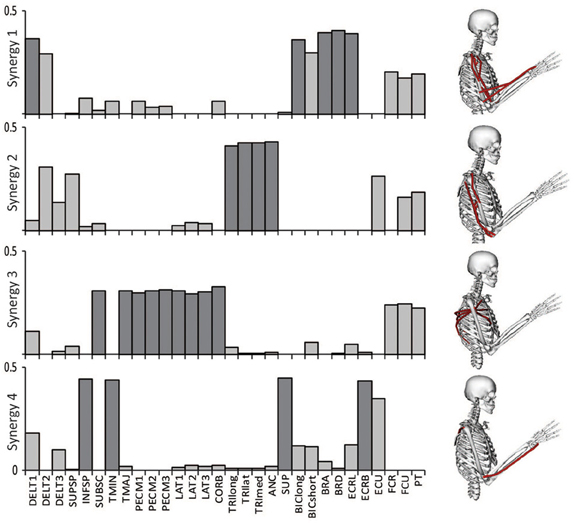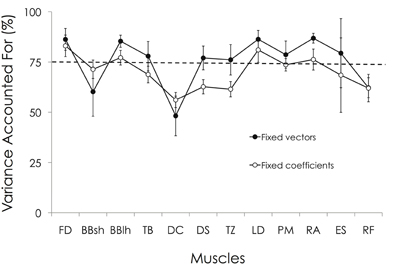

Motor impairments following a stroke affect the daily lives, social participation activities, and the quality of life of stroke survivors. We postulated the effect of biomechanical constraints on the intermuscular coordination and suggested a possible intermuscular coordination-based rehabilitation protocol that provides the biomechanical constraint appropriate to a trainee throughout the progress of rehabilitation.
#Muscle synergy free
Compared with free (i.e., unconstrained) movement, exercise under biomechanical constraints including the isokinetic constraint might promote the activation of muscle synergies independently in stroke survivors. Stroke-affected upper limbs seemed to modularize the activation of the shoulder and elbow muscles in a fairly similar way to that of neurologically intact individuals during isokinetic movements. The severity of motor impairments was negatively correlated with the similarity of the post-stroke synergies with respect to the mean control synergies. Alternatively, the modulation of synergy activation coefficients was altered after a stroke. When the number of muscle synergies between the groups matched, the comparable composition of muscle synergies was observed in both groups. The composition of muscle synergies was comparable between the groups, except that the three heads of the deltoid muscle were co-activated and formed one synergy in the stroke group, whereas those muscles formed two synergies in the control group. Resultsįour and five muscle synergies in the stroke and control groups were observed, respectively. The correlation between the alteration of muscle synergies and the level of motor impairment was investigated. Then, we compared the number, composition, and activation coefficients of muscle synergies and the end-point force between the groups. Intermuscular coordination of the stroke survivors and the control participants was quantified in the form of muscle synergies. End-point forces and electromyographic activities of the shoulder and elbow muscles were measured while the participants performed isokinetic upper limb movements in a three-dimensional space. Sixteen chronic stroke survivors and eight neurologically intact individuals were recruited. In this study, we investigated upper limb intermuscular coordination after a stroke during isokinetic movements. By evaluating the intermuscular coordination in the affected limb under various biomechanical task constraints, the impact of a stroke on motor control can be analyzed and intermuscular coordination-based rehabilitation strategies can be developed. Taking red yeast rice with other statins might increase the risk of harmful side effects.Abnormal intermuscular coordination limits the motor capability of stroke-affected upper limbs. Taking this supplement with red yeast rice might reduce the effectiveness of red yeast rice. Taking red yeast rice with high-dose niacin might increase the risk of myopathy. Taking red yeast rice with these types of drugs, herbs and supplements could increase the risk of liver damage. Red yeast rice might contain monacolin K, which can cause liver damage in some people. Hepatotoxic drugs, herbs and supplements.

Taking this cholesterol drug with red yeast rice might increase the risk of myopathy.

Drinking grapefruit juice and taking red yeast rice might increase the risk of the supplement's harmful side effects. Taking red yeast rice with drugs, such as erythromycin, that inhibit this enzyme might increase the risk of harmful red yeast rice side effects. Cytochrome P450 3A4 (CYP3A4) inhibitors.Taking this immunosuppressive drug with red yeast rice might increase the risk of myopathy. The combination might increase the risk of liver damage. Don't drink alcohol if you are taking red yeast rice.


 0 kommentar(er)
0 kommentar(er)
